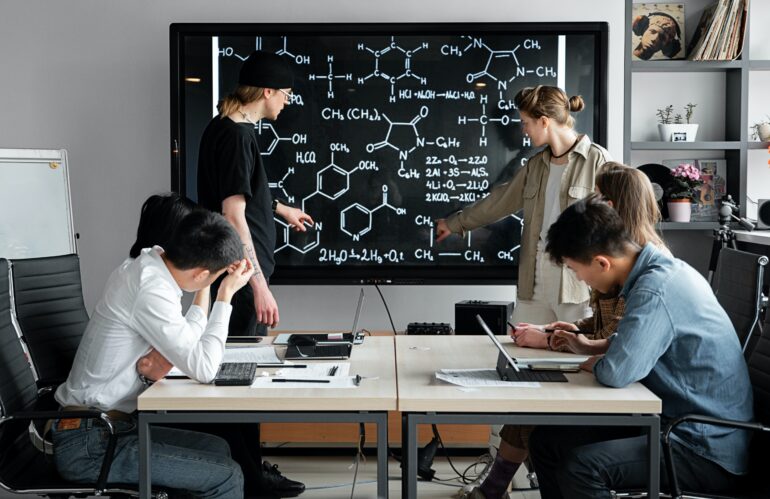
As a college professor, it is essential to create the optimal learning environment for your students. To do this, it is important to model positive learning habits in the classroom. The following are five ways to model positive learning habits in the classroom as a college professor.
Collaboration and creativity
Professors should strive to model collaboration and creativity. By encouraging students to work together, it can help foster an environment of inclusivity and collaboration. Instructors should be challenging students to think outside the box. For example, asking students to come up with creative solutions to problems, and discuss how different individuals could tackle a given issue in unique ways.
Activities such as storyboards, role play, and “How might we…” are excellent for encouraging learners to engage in creative collaboration. The goal is to get students excited about learning, and to show them the many avenues and pathways to obtaining knowledge.
Showcase adaptability
Life is a series of changes, and it is important to be able to roll with the punches. Modeling adaptability is perhaps the most obvious skill to showcase— in the classroom, things don’t always go according to plan. We have all witnessed at least one instructor misplace a thumb drive full of presentations or artfully improvises a whole lesson because they forgot their teaching materials.
As a professor, it is important to show students that it’s okay to course correct if an unforeseen issue presents itself. This ability to adapt can help prepare students for future challenges and demonstrate that the path to success is not always linear.
Foster curiosity
Learning is a lot more dynamic when professors model curiosity. It is important to motivate students to look beyond the basics of course material and to explore many different topics. Ask students to go beyond the surface level when it comes to understanding a given subject. Encourage students to develop their own conclusions and ask questions to further their knowledge.
Consider incorporating experiential learning opportunities. These can take place in the form of small group projects/assignments, practicum/field placements, or service-learning projects.
Prioritizing tasks and making revisions
With so many competing priorities, it is important to be able to prioritize tasks in an effective manner. Thoroughly discuss the proper steps for task management with students, including writing to-do lists, taking breaks, and outlining short-term and long-term goals. Ideally instructor should be showing students that being organized and on top of your work increases productivity.
Finally, professors should strive to model revision and editing in the classroom. Errors are inevitable, but that does not mean that students should not strive for excellence. Show students the importance of incorporating revisions in order to improve the strength and accuracy of their work. Emphasize the value of the editing process and discuss ways to successfully proofread and make revisions.
Overall, these are five ways are important for modeling positive learning habits in the classroom as a college professor. It is essential to create the optimal learning environment for your students, and often this begins with setting a positive example. By demonstrating collaboration and creativity, adaptability, curiosity, prioritizing tasks, and revision and editing, its possible to create an environment conducive to successful learning.

